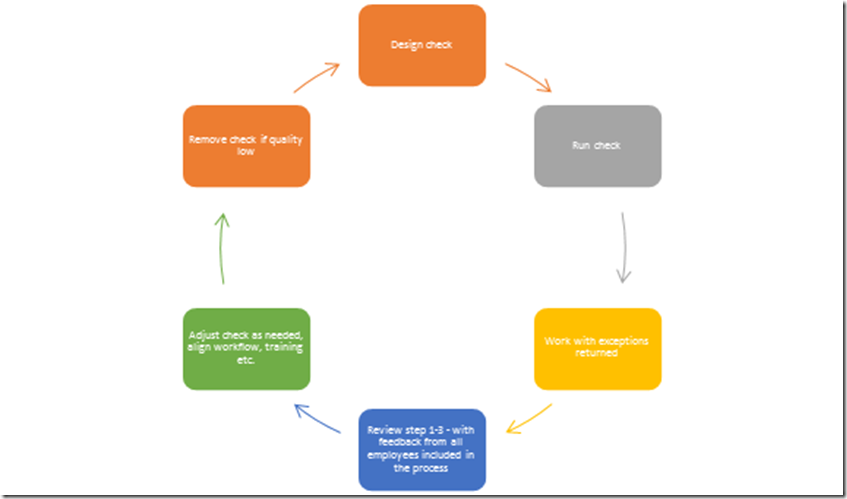The importance of a disciplined workflow in exMon
Created by: Kristinn Magnusson
Chapter 3 of 3 describes best practices when implementing exMon Continuous Monitoring. Specifically, the importance of a disciplined workflow in exMon.
Importance of disciplined workflow in exMon
For clarity and efficiency, it is important to maintain disciplined workflows in exMon. Following the previous guidelines form the basis for and enhances the quality of workflows in exMon.
Repeating the below cycle, alongside quality training will help build up a culture of quality work around continuous monitoring and exception management. See figure 1.
Figure 1: Cycle of enhanced check quality:

Disciplined actions, such as always attaching a comment/explanation to every case that is defined as "not-an-exception", are vital. The case handler must understand the actual result of marking an exception as "not-an-exception". This means you are silencing and hiding an exception and that you have to understand what that means to the respective process and why. Other actions may include disciplined methods to work with lists of assigned exceptions, to actually attack them as to-do lists or back-log that is important to handle as soon as possible.
Experience with other exMon CM customers shows that we often experience a growing culture of proactively implementing different checks when producing new processes and services. People are more likely to proactively check their own work, resulting in a more proactive and preventive culture.
This process also enhances the visibility of internal processes. A process-wide perspective now allows people to draw, discuss and internalise process maps with confidence. As a result, it is now easier to distinguish responsibilities and visibility throughout the process of understanding failures.
Kristinn is the author of this solution article.